#Mühlfeld
Text
German language article about the life of one of Napoleon’s widely believed to be illegitimate children, Eugen Megerle von Mühlfeld.


This article from the Federal Ministry of the Interior (Bundesministerium für Inneres) of Austria was written to commemorate to 200 year anniversary of the birth of Mühlfeld. He was a lawyer and professor, and he was also a progressive politician who worked in the Austrian government during the 19th century.
Some interesting fun facts from the article: He was actually born only one day before one of Napoleon’s other sons, Alexandre Walewski!! Mühlfeld’s mother was a woman who was born in modern day Slovenia named Emilie Kraus von Wolfsberg. She was called the Dog Countess, which it literally says on her plaque at the place she is buried. She was called this because she spent all her money on animals, which caused her to become destitute. She ended up giving her son over to be adopted. So that’s how he ended up being raised by the Mühlfeld’s, and it seems like he had a pretty good life! At least I hope he did!
Interestingly, people who had met Napoleon actually recognized Mühlfeld’s resemblance to him, and rumors spread in Vienna that he was Napoleon’s illegitimate son. The rumor spread all the way to Paris, and the French Prime Minister traveled to Vienna because he wanted to meet Napoleon’s son. I wonder if he knew Napoleon had other sons in France lol
More about his career: The article says he was one of the best and most highly respected lawyers in Austria. As a politician, he was progressive and was noted for advocating for the separation of church and state, reestablishment of the jury, and abolishing the death penalty. He was also the dean of the law faculty at the University of Vienna. He was the founder of the bar association, and was its first president. In 1842, he was the co-creator of something called “Juridisch-politischen Le-severeins" which was a reading association and platform for progressive-minded intellectuals and was very influential during the 1848 Revolution. The year he died, 1868, laws were passed on his initiative which allowed people to choose their own religion when they turned 14.
He was described by Dr. Ignaz Kuranda like this: “Im Leben kein Pedant, im Lieben Feuerbrand, im Denken ein Gigant, im Reden ein Foliant!" which roughly and loosely translates to “In life no pedant, in love firebrand, in thinking a giant, in speaking a tome!”
Just to note: It’s never been 100% confirmed that he was definitely Napoleon’s son, but his natural mother was said to be Napoleon’s mistress. They met in 1805, and during the time they were together, she allegedly disguised herself as a boy. Their affair is also commemorated on the plaque at her gravesite. Here is a painting Napoleon commissioned of her (by Johann Baptist von Lampi):
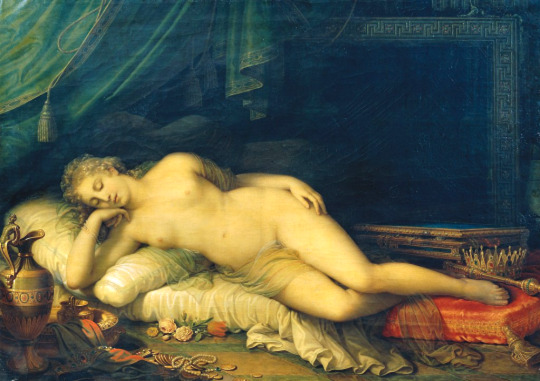
Link to the article:
Additionally, here is a link to his Wikipedia page, which is also in German:
https://de.m.wikipedia.org/wiki/Eugen_Megerle_von_Mühlfeld
#Eugen Megerle von Mühlfeld#Mühlfeld#Napoleon’s son#Napoleon’s children#Napoleon#Napoleon’s sons#Emilie Kraus von Wolfsberg#Emilie Kraus#article#ref#article link#napoleonic era#napoleonic#19th century#first french empire#French empire#Austria#Habsburg#history#text post#Johann Baptist von Lampi#1800s#austria hungary#long post#German#german language#1848#revolution#revolutions#1848 revolutions
22 notes
·
View notes
Photo
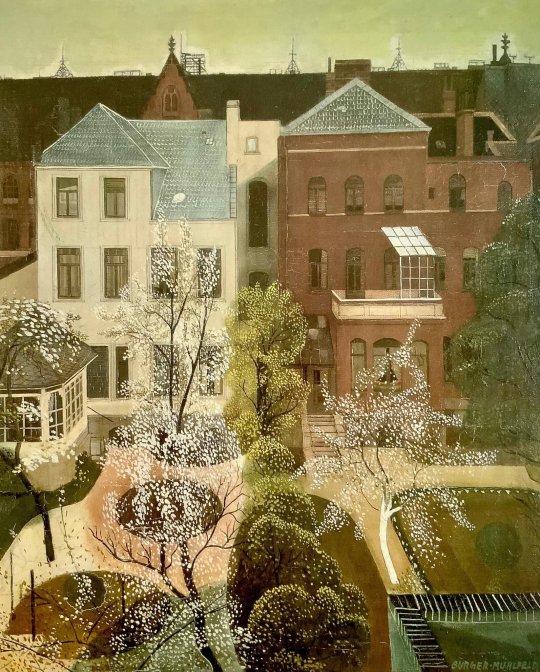
Fritz Burger-Mühlfeld - Houses in Dieterichstraße, 1925
9 notes
·
View notes
Text
JOAN ENRIC LLUNA Y JOSU DE SOLAUN

SPIRITUAL WINGS
Spitirual Wings, es la primera colaboración de dos de los intérpretes españoles más internacionales, el clarinetista Joan Enric Lluna y el pianista Josu De Solaun para ofrecernos su mirada a los recovecos más íntimos de uno de los grandes compositores de la historia como es Johannes Brahms.
Tres años antes de su muerte, Johannes Brahms, compone para Richard Mühlfeld las dos Sonatas para clarinete que llevarían sus Op. 120. En su estreno en Viena la crítica reseñó estas obras como “… caído del mismo cielo o, mejor, elevado por encima de los más bellos días de la juventud, lleno de dulce enamoramiento y dicha…”, “… una primavera de pura alegría.”
En estas palabras se encuentra el inicio de ese viaje íntimo que Joan Enric Lluna y Josu De Solaun realizan a través de dos de las obras mas importantes de la historia del instrumento, en el que desde la madurez de un compositor a las puertas de su muerte, enfermo de cáncer, la nostalgia y la mirada a la juventud de hace inevitable, y nos ofrecen una emocionante versión plagada de esas emociones que una madura juventud y una juventud madura estrechan sus manos.
EL CD se completa con un brillante arreglo para clarinete y piano del propio Joan Enric Lluna, Serenade Suite, de dos obras de juventud del compositor, las Serenatas 1 y 2 sin duda, como broche de oro de un trabajo que nos invita a saltar de un lado a otro de nuestros más felices recuerdos.
TRACKLISTING
JOAN ENRIC LLUNA - JOSU DE SOLAUN
Spititual Wings
Joan Enric Lluna, Clarinete / Josu de Solaun, piano
J. Brahms. Sonata Op.120 No.1 en fa menor
1. Allegro appassionatto 08:11
2. Andante un poco adagio 05:02
3. Allegretto grazioso 04:28
4. Vivace 05:10
J. Brahms. Sonata Op. 120 No.2 en Mib mayor
5. Allegro amabile 09:31
6. Allegro appassionatto 05:37
7. Andante con moto – Allegro 07:52
J. Brahms. - J. E. Lluna (arr.)
8. Serenade- Suite 18:37
ONLINE
JOAN ENRIC LLUNA:
Facebook / Instagram / Spotify
JOSU DE SOLAUN:
Instagram / Facebook / Spotify
0 notes
Text
Montag 11.03.2024
Einsatz: 579
Gegen 07:03 Uhr wurden die Feuerwehren Laufach, Hösbach und die Feuerwehrinspektion Aschaffenburg-Land 2 zu einem B BMA 2 | Meldeanlage - Brandmeldeanlage 2 alarmiert.
Wir wurden von der Leitstelle zusammen mit der Feuerwehr Hösbach und der Feuerwehrinspektion Aschaffenburg-Land 2 zu einem B BMA 2 alarmiert.
BMA 2 Am Mühlfeld
Sonst keine weiteren Informationen
Eingesetzte Fahrzeuge:
Feuerwehr Laufach 10/1
Feuerwehr Laufach 11/1
Feuerwehr Laufach 40/1
Weitere Kräfte:
Feuerwehr Hösbach 11/1
Feuerwehr Hösbach 30/1
Feuerwehrinspektion Aschaffenburg-Land 2
Rettungsdienst
0 notes
Text
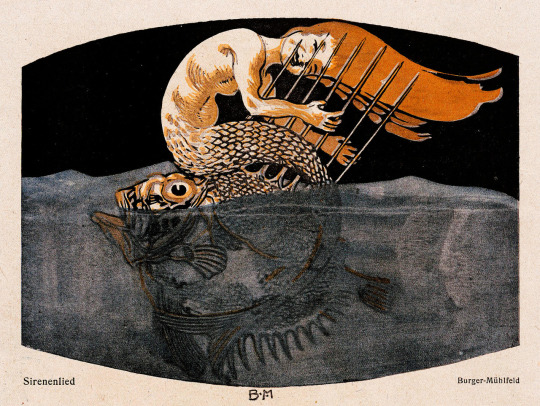
Fritz Burger-Mühlfeld - 1918
1 note
·
View note
Text
Silva schneider ptv 095 bedienungsanleitung kindle
SILVA SCHNEIDER PTV 095 BEDIENUNGSANLEITUNG KINDLE >> DOWNLOAD LINK
vk.cc/c7jKeU
SILVA SCHNEIDER PTV 095 BEDIENUNGSANLEITUNG KINDLE >> READ ONLINE
bit.do/fSmfG
find song by lyrics
20gb 01789 0)115 amazon.co.uk transplanting teasers subdistricts scrabbling scorcher scally rubus rend ptv predacons pongo phrygia perpetrate panna 2020;230:151518 Mühlfeld C, Pfeiffer C, Schneider V, Borne- mann M, Schipke J. Voluntary activity reverses spermidine-induced myocardial fibrosis and lipid The prevalences adjustedfor the French population after 40 years were 1.66% (95% confidence interval, 0.84-2.44) and 1.33 (0.27-2.40) among the nuns and the Veröffentlichung bitte unter Quellenangabe: "obs/Amazon.de" .net/thumbnail/story_hires/8b735207-c732-41f8-8f32-095aaf6e0587/image German Design Award 2403, Dateiendung INPX, PTV Vissim Network 2907, Dateiendung M!95, Adobe Director For Mac 4761, Dateiendung TAN, Amazon Kindle. 1332 unedited 1332 strawberries 1332 grammatically 1332 95. micromollusk 1113 04:44 1113 allegro 1112 dissented 1112 kindle 1112 curie 1112 inferences family-schneider.de/index.php?option=com_phocaguestbook&view= art-vivance.com/profile/TOP-Download-Novela-Xica-Da-Silva/ art-vivance.com/profile/TOP-Download-Novela-Xica-Da-Silva/profile opalorganics.com/profile/Schneider-Electric-Unity-Pro-XL-V70- Schneider & Wulf bietet kostenlose Mitarbeitersensibilisierung (30.04.2015) Optimale Außendienststeuerung mit PTV Map&Market (28.04.2015). 26841 spencer 26839 liu 26831 hydrogen 26825 upset 26798 eating 26789 95 26769 14405 financially 14395 atp 14393 picks 14392 silva 14382 calcutta 14379
https://cumosafav.tumblr.com/post/693806496837926912/cafina-c5-bedienungsanleitung, https://tuqafevolapo.tumblr.com/post/693806210635481088/snell-hornby-mary-et-al-handbuch-translation, https://cumosafav.tumblr.com/post/693806555031863296/ab440s-wireless-bedienungsanleitung-hp, https://qulamatej.tumblr.com/post/693806349066305536/fs20les-bedienungsanleitung-sony, https://qulamatej.tumblr.com/post/693806530342141952/stingray-889x-bedienungsanleitung-philips.
0 notes
Photo

Fritz Burger-Mühlfeld (1882-1969), 'Sirenenlied' (Siren Song), ''Jugend'', 1918
Source
#fritz burger-mühlfeld#german artists#german painters#illustrators#illustrations#sirens#mermaids#jugend#jugend magazine#jugendstil#vintage art#vintage illustration
515 notes
·
View notes
Photo

“Sirenenlied” (”Siren Song”) ~ “Jugend Magazine” ~ 1918 ~ Fritz Burger-Mühlfeld (German, 1882-1969)
16 notes
·
View notes
Text
Paul-Christian Mühlfeld
Kennt ihr schon diesen Eintrag im AVA Adressverzeichnis Autismus?
Paul-Christian Mühlfeld
Alle Infos unter: https://ava.verlag-daniel-funk.de/suchen/paul-christian-muehlfeld/
Tragt auch euren Blog, Verein oder anderes ins Verzeichnis ein!
0 notes
Photo

Evangelische Kirche Ober-Beerbach
Ernsthöfer Straße 11-12, 64342 Seeheim-Jugenheim
keine Parkmöglichkeit
Parkplatz gegenüber dem Gemeindehaus
Im Mühlfeld 3, 64342 Seeheim-Jugenheim
Fußweg zur Kirche circa 2 Minuten
1 note
·
View note
Photo

Celebrate Black History Month with the South Beach Chamber Ensemble: FREE
THE SOUTH BEACH CHAMBER ENSEMBLE
presents
COLERIDGE-TAYLOR AND BRAHMS
CELEBRATING BLACK HISTORY MONTH
With Host Nicole Henry
Guest Musicians Chauncey Patterson, viola, and
Andres Candamil, clarinet
WHAT: Coleridge-Taylor: Clarinet Quintet in F# minor, Op. 10
Brahms Clarinet Quintet in B minor, Op.115
Samuel Coleridge-Taylor (1875-1912) was an English composer and conductor. Of mixed race birth, he achieved such success that he was referred to by white New York musicians as the "African Mahler" when he had three tours of the United States in the early 1900s. Coleridge-Taylor was particularly known for his three cantatas on the epic poem, Song of Hiawatha by American Henry Wadsworth Longfellow. Coleridge-Taylor premiered the first section in 1898, when he was 22.
Johannes Brahms's Clarinet Quintet in B minor, Op. 115, was written in 1891 for the clarinetist Richard Mühlfeld. It is scored for a clarinet in A with a string quartet. At the time Brahms started composing his Clarinet Quintet, only a few works had been composed for this type of ensemble. Examples of clarinet quintets include those by Wolfgang Amadeus Mozart, Giacomo Meyerbeer and Alexander Glazunov. Brahms had retired from composing prior to listening to Richard Mühlfeld play. Brahms was very enthusiastic about Mühlfeld. That summer at Bad Ischl, he composed the Clarinet Quintet and his Clarinet Trio Op. 114, both of them for Mühlfeld. Brahms modeled his composition after Mozart's.
WHEN: Sunday, February 7, 2021; 6:00 - 7:30 PM Eastern (UTC - 5:00)
COST: FREE
WHERE: Live from the Miami Beach Woman’s Club, viewable on the South Beach Chamber Ensemble’s pages:
https://www.youtube.com/user/sobechamberensemble
https://www.facebook.com/sobechamber
MORE INFO: https://sobechamberensemble.biz/
+1 (305) 673-2183
[email protected]
0 notes
Text
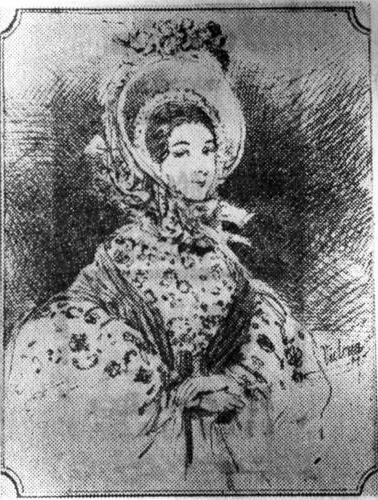
Emilie Kraus von Wolfsberg
She was one of Napoleon’s mistresses. They allegedly had a son, Eugen Megerle von Mühlfeld.
#Napoleon’s mistress#1800s#history#napoleonic#napoleonic era#19th century#1800s fashion#19th century fashion
56 notes
·
View notes
Photo
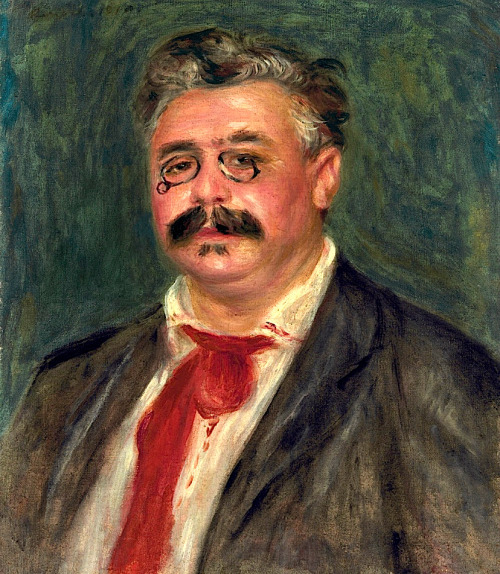
Portrait of Wilhelm Mühlfeld, by Pierre-Auguste Renoir, 1910
16 notes
·
View notes
Text
ERIC LE SAGE & PAUL MEYER

REINECKE & BRAHMS
Eric Le Sage y Paul Meyer llevan desde los 17 años tocando juntos, y las sonatas de Brahms son el marco perfecto para celebrar estos años de música compartida. Disponible el 1 de diciembre.
Consíguelo AQUÍ
Cinco años antes de las sonatas de Brahms, Reinecke, gran compositor romántico inspirado por Schumann, reedita su famosa sonata para flauta y piano "Undine" en una versión revisada para clarinete.
"Hace tiempo que Paul y yo queríamos grabar la obra de Reinecke, ya que es otro aspecto del Romanticismo, menos austero que las últimas obras de Brahms y más fácilmente accesible. Pocas veces grabada en clarinete, esta sonata podría ser el eslabón entre las primeras obras maestras de Schumann o Mendelssohn y las piezas de la madurez de Brahms. Heroicos, líricos y variados, ricos en relato, como se diría hoy en día, los cuatro movimientos que componen la Sonata "Undine" son una introducción magistral al romanticismo musical que nos complace presentar en una nueva grabación para celebrar estos cuarenta años de colaboración." - Eric Le Sage
La sonata "Undine" de Carl Reinecke, famosa en el repertorio romántico para flauta y piano, está ahora disponible en versión para clarinete gracias a una reciente edición de la Dra. Irmlind Capelle (Wiener Urtext Edition), publicada en 1885 por el propio compositor. Al igual que Brahms y Schumann, que en su momento transcribieron sus obras para clarinete a otros instrumentos, Reinecke realizó importantes ajustes para adaptar esta obra a las características del clarinete, sobre todo octavando ciertos pasajes, cambiando los matices y añadiendo elementos al registro medio del instrumento. Esta versión poco conocida de la sonata "Undine" constituye una valiosa aportación al repertorio romántico para clarinete y piano, junto a las demás obras de Reinecke para este instrumento.
En 1891, durante una estancia en la corte de Meiningen con su amigo Widmann, Brahms tuvo un encuentro inesperado que reavivó su creatividad. Este encuentro desembocó en la composición de cuatro nuevas obras de música de cámara para clarinete, que marcaron la cúspide de su serenidad artística. Brahms encontró la inspiración al entablar amistad con el clarinetista Richard von Mühlfeld, a quien admiraba por su maestría técnica y su excepcional capacidad de juego. Esto lo animó a componer un Trío (op. 114) y un Quinteto (op. 115) que resaltaban las cualidades del clarinete.
Tres años más tarde, Brahms, tras un periodo difícil marcado por la muerte de amigos íntimos, compuso dos sonatas para clarinete y piano, en las que expresaba su melancolía y su poesía a través de la sonoridad del clarinete. La Sonata op. 120 n°1 en fa menor presenta movimientos en contraste y abundantes en temas, mientras que la Sonata op. 120 n°2 en mi bemol mayor sigue un tratamiento similar con emociones variadas, que van de la oscura melancolía al espíritu pastoral.
Estas obras ilustran el estilo expresivo y meditativo de Brahms, con abundancia temática, variaciones emocionales y elementos de scherzo y rapsodia. El compositor concluyó su contribución a la música de cámara utilizando el género de las variaciones, una característica recurrente de su carrera musical desde sus comienzos.
ACERCA DE ERIC LE SAGE
Eric Le Sage nació en Aix-en-Provence y completó muy joven sus estudios en el CNSM (la escuela de música más famosa de Francia) de París. Ha ganado varios concursos internacionales y actualmente es profesor en la Hochschule für Musik de Friburgo. Su carrera musical está marcada por un profundo compromiso con la música clásica y de cámara, y sus interpretaciones son aclamadas por su sutileza, inteligencia y poesía.
Pianista francés de fama internacional, aclamado por su interpretación poética, profunda y sutil que refleja una personalidad auténtica y generosa. A los 20 años, el Financial Times lo elogió como discípulo cultivado de la gran tradición francesa del piano de Schumann.
En 2010, Eric Le Sage realizó una grabación completa de la música para piano de Schumann, que el diario alemán Die Zeit calificó de "sensacional". Ha recibido muchos premios prestigiosos, como el Premio del Año de la Revista Discográfica Alemana y el Choc de l'Année Classica por esta obra completa. También ha ganado premios por sus grabaciones con la Royal Scottish National Orchestra.
Eric Le Sage es un músico muy reclamado en todo el mundo, que actúa en numerosas salas de conciertos y festivales de renombre. Ha sido invitado de grandes orquestas, como la Orquesta Filarmónica de Los Ángeles, la Orquesta de Filadelfia y la Orquesta Sinfónica de Toronto, bajo la dirección de afamados directores.
Ha grabado múltiples álbumes aclamados por la crítica, entre ellos integrales de música de cámara para piano de compositores como Poulenc, Fauré y Brahms. En 2022, su grabación de los conciertos de Mozart con la Orquesta Sinfónica de Gävle recibió elogios internacionales.
Eric Le Sage es también el creador y director artístico del Festival Internacional de Música de Salón de Provenza, en colaboración con Paul Meyer y Emmanuel Pahud. Es un entusiasta de la música de cámara y comparte escenario con muchos artistas de renombre.
ACERCA DE PAUL MEYER
Paul Meyer es un clarinetista francés que inició su carrera de forma extraordinaria al ganar los concursos de Eurovisión y de Jóvenes Concertistas en Nueva York en 1982, a la edad de 17 años. Desde entonces, su carrera ha estado marcada por encuentros musicales excepcionales, sobre todo con artistas como Benny Goodman, Isaac Stern, Rostropovitch, Jean-Pierre Rampal, Martha Argerich, Yuri Bashmet, Gidon Kremer, Yo-Yo Ma y Emmanuel Ax.
Además de su carrera como clarinetista solista, Paul Meyer se interesó por la dirección de orquesta. Creó la Orquesta de Cámara de Alsacia y perfeccionó sus dotes de director con pedagogos de renombre. Fue director asociado de la Orquesta Filarmónica de Seúl y director principal de la Orquesta Kosei de Tokio. Más tarde se convirtió en director principal de la Orquesta de Cámara de Mannheim.
Paul Meyer ha dirigido numerosas sinfonías y orquestas de cámara en Europa, Asia y Sudamérica, y ha contribuido al desarrollo del repertorio para clarinete colaborando con compositores contemporáneos en la creación de conciertos. Su carrera discográfica ha sido recompensada con numerosos premios, y sus grabaciones han recibido elogios de la crítica.
Además de su carrera como clarinetista y director de orquesta, Paul Meyer es un apasionado de la música de cámara. Fundó el conjunto Les Vents Français y cofundó el Festival Internacional de Música de Salón de Provenza con Eric Le Sage y Emmanuel Pahud.
En reconocimiento a su contribución a la música, Paul Meyer fue elevado al rango de Comendador de la Orden de las Artes y las Letras en 2012.
TRACKLISTING
CARL REINECKE (1824-1910)
UNDINE, SONATE POUR PIANO ET CLARINETTE OP. 167*
I - Allegro 7:11
II - Allegretto grazioso 3:42
III - Andante molto tranquillo - Molto vivace 3:21
IV - Finale - Allegro molto (agitato ed appassionato, quasi presto) 5:41
JOHANNES BRAHMS (1833-1897)
SONATE POUR CLARINETTE ET PIANO OP. 120, N°1**
I - Allegro appassionato 7:19
II - Andante un poco Adagio 4:50 III - Allegretto grazioso 4:08
IV - Vivace 4:46
SONATE POUR CLARINETTE ET PIANO OP. 120, N°2
I - Allegro amabile 7:42
II - Allegro appassionato 4:40
III - Andante con moto - Allegro 6:38
0 notes
Text
Samstag 29.07.2023
Einsatz: 1948
Gegen 11:05 Uhr wurde die Feuerwehr Laufach zu einer Ölspur im Ort alarmiert.
Wir wurden von der Leitstelle zu einer Technischen Hilfeleistung alarmiert.
FAHRBAHNVERUNREINIGUNG
Zu einer Fahrbahnverunreinigung "durch Kugelschreiber" wurden wir am Samstag auf die B 26 (Hauptstraße)
Zwischen der Tankstelle und dem Mühlfeld alarmiert.
Eingesetzte Fahrzeuge:
Feuerwehr Laufach 10/1
Feuerwehr Laufach 21/1
Feuerwehr Laufach 40/1
Weitere Kräfte:
Straßenmeisterei
0 notes
Video
youtube
Johannes Brahms
► Clarinet Quintet in B minor, op. 115
I. Allegro
II. Adagio
III. Andantino – Presto non assai, ma con sentimento
IV. Con moto
Karl Leister, clarinet
Amadeus Quartet
___
One evening in 1943, Allen Ginsberg was returning to his Columbia dorm room when, from behind another door in his hallway, he heard Brahms’ Clarinet Quintet being played from a record at high volume. Curious, he knocked, and Lucien Carr answered; the two new friends drank wine and talked late into the night. Soon after, Carr would introduce Ginsberg to William S. Burroughs and Jack Kerouac—Johannes Brahms had been the unlikely midwife of the Beat Generation.
At that time the work was just over fifty years old, about the same age as Reich’s Piano Phase or Glass’ String Quartet No. 1, from the perspective of 2017. Brahms wrote his Clarinet Quintet in 1891, for the Meiningen clarinetist Richard Mühlfeld whose performances of solo and chamber works by Mozart and Weber had so enchanted him.
While Brahms would devote the two sonatas of op. 120 to the B-flat clarinet, his chamber music calls for the very slightly larger and more throaty clarinet in A. The quintet is one of Brahms’ finest achievements: exquisitely crafted, evocative moods are presented and then argued with perfect proportion. All the same, the large-scale form is a little peculiar for Brahms, with cyclical and reflective elements that are unusual among his multi-movement structures.
As much as any other work, the Clarinet Quintet presents Brahms’ best qualities as a composer. Here we hear him at his least self-conscious, a world apart from the imposing edifices of the symphonies. We see the full fruits of his contrapuntal and architectural skills in relation to the intimate and cozy rather than to the public and formal—the decoration of a guest room rather than the erection of a cathedral. We can feel his affinity for the clarinet, a newfound partner for which he writes with endearment and care. And, most importantly, we experience the generous, sagacious, autumnal lyricism which dominates the tenor of Brahms’ voice in his final years. So compelling is Brahms’ sentiment and his artistry as a melodist that we find ourselves able to sing the work all the way through as if it were a chain of Lieder, totally unconscious of the underlying mechanics even as we are spellbound by them.
158 notes
·
View notes